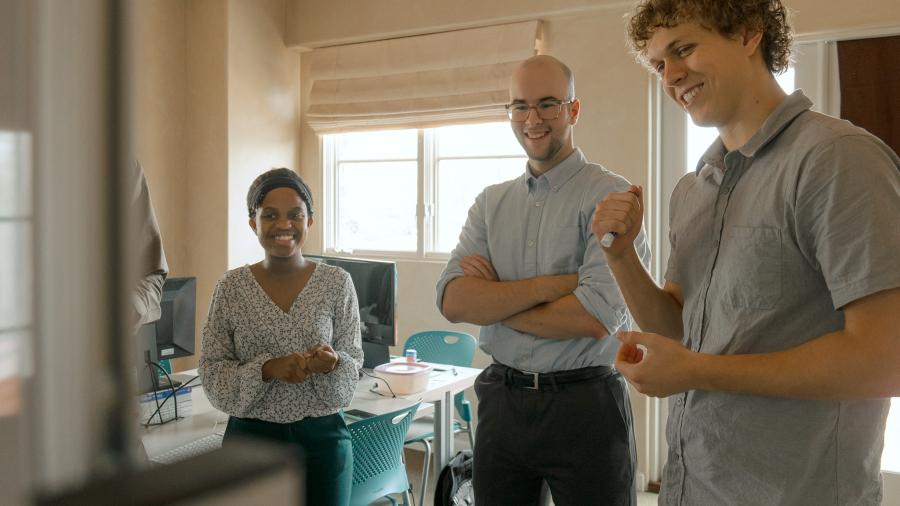CATLab Blog Creating a Strong AI Foundation

Ryan Magnuson and Nice Teta Hirwa reflect on the challenges they faced while creating new AI tools for Westmont's admissions department.
We started without a clue about what we were doing.
When Nice Teta Hirwa and myself, Ryan Magnuson, were placed on the Admissions AI team at CATLab, we delved deep into supervised learning models and general machine learning. I’d be lying if I said developing AI tools for the Westmont admissions department wasn’t a daunting task, but I’d also be lying if I said it wasn’t an incredible learning exercise in professionalism, work ethic, and technical know-how. I wouldn’t take it back for the world.
We started where most people begin when they have no idea what they’re doing: searching online. We both completed Google’s machine learning course, learned the specifics of many different models and their strengths and weaknesses, and searched for products that could make our vision a reality. We settled on scikit-learn, in Python, for its ease of use and depth of capabilities. After a little experimenting on a small example dataset about penguins, we decided we were ready for the real thing.
Then came in the data, the whole life behind our project. We quickly realized that plugging data into a machine learning model entails a whole lot of data manipulation in order to make it actually usable to a computer. This meant a serious chunk of the summer would be dedicated to making a usable dataset out of scrambled and incomplete data. So, we put our heads down and got to work. We used Python’s “pandas” library to easily manipulate our data, and stayed in touch with Westmont’s Admissions team to make sure any manipulations we made were safe and accurate assumptions.
After what seemed like an endless amount of fine-tuning, we created a machine-readable dataset, making our end goal much clearer and much closer to reality. All we needed to do was pick a model, tell it to predict, and our job would be as easy as that. Only, as is natural in the tech world, it would never be as easy as that. The model’s initial accuracy left much to be desired—this meant more fine tuning, more heads-down work, in order to improve the product.
At this time, we came to the realization that while model accuracy was in the works, we could spend some time thinking about the front end of the product. We knew we wanted that front end to live in Salesforce, as that is the environment where Westmont’s Admissions staff do their jobs, so we looked into how a smooth user experience could be achieved. After setting up a server to handle data transfer between our back end model and Salesforce, as well as creating some Visualforce pages to serve as the front end experience, we began nearing what our product now looks like today.
There’s still a lot of refinement to do, and a lot to work on, but the work we accomplished in just a few months sets a strong precedent and starting point for future developers, whoever those developers may be.